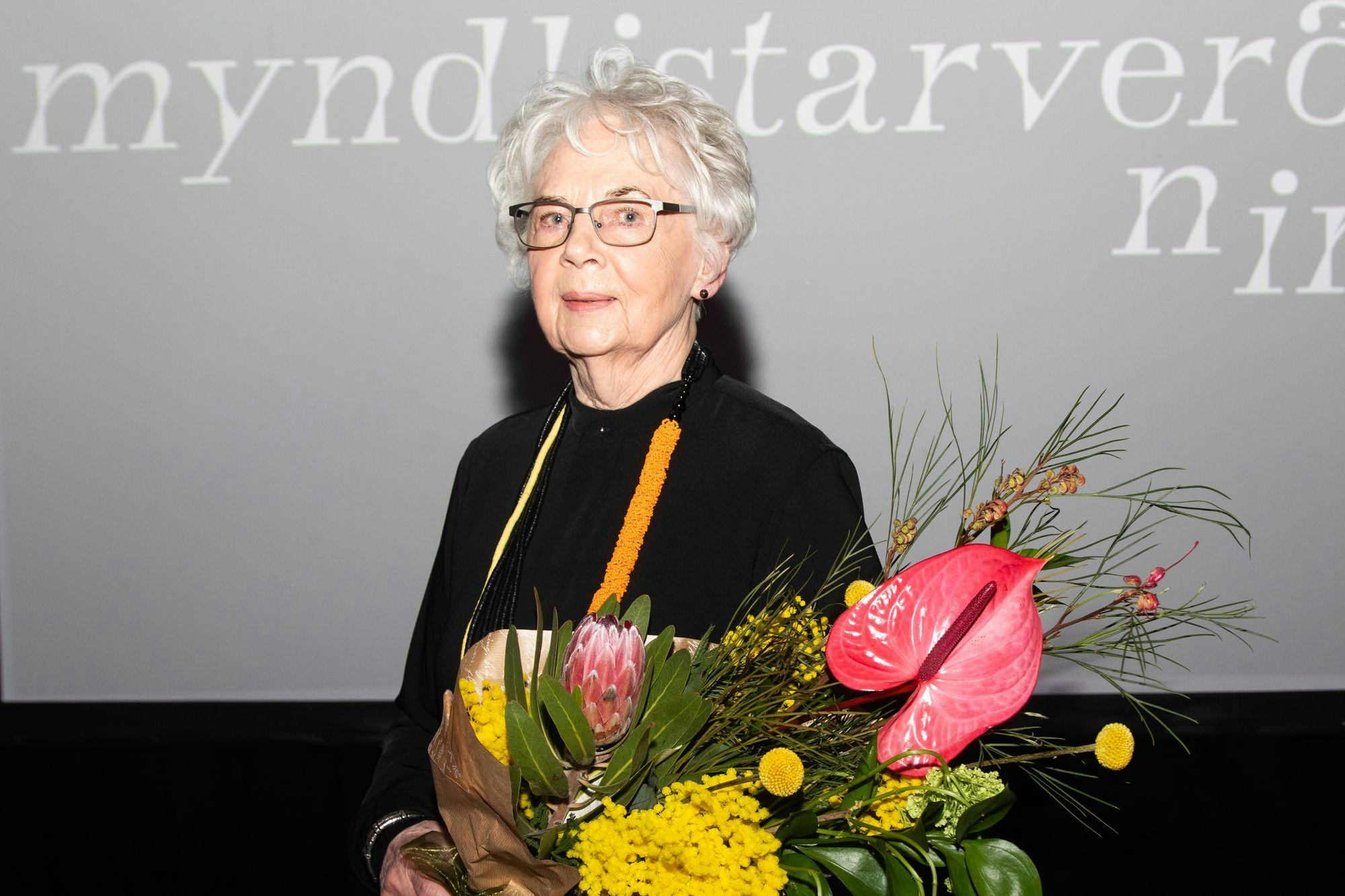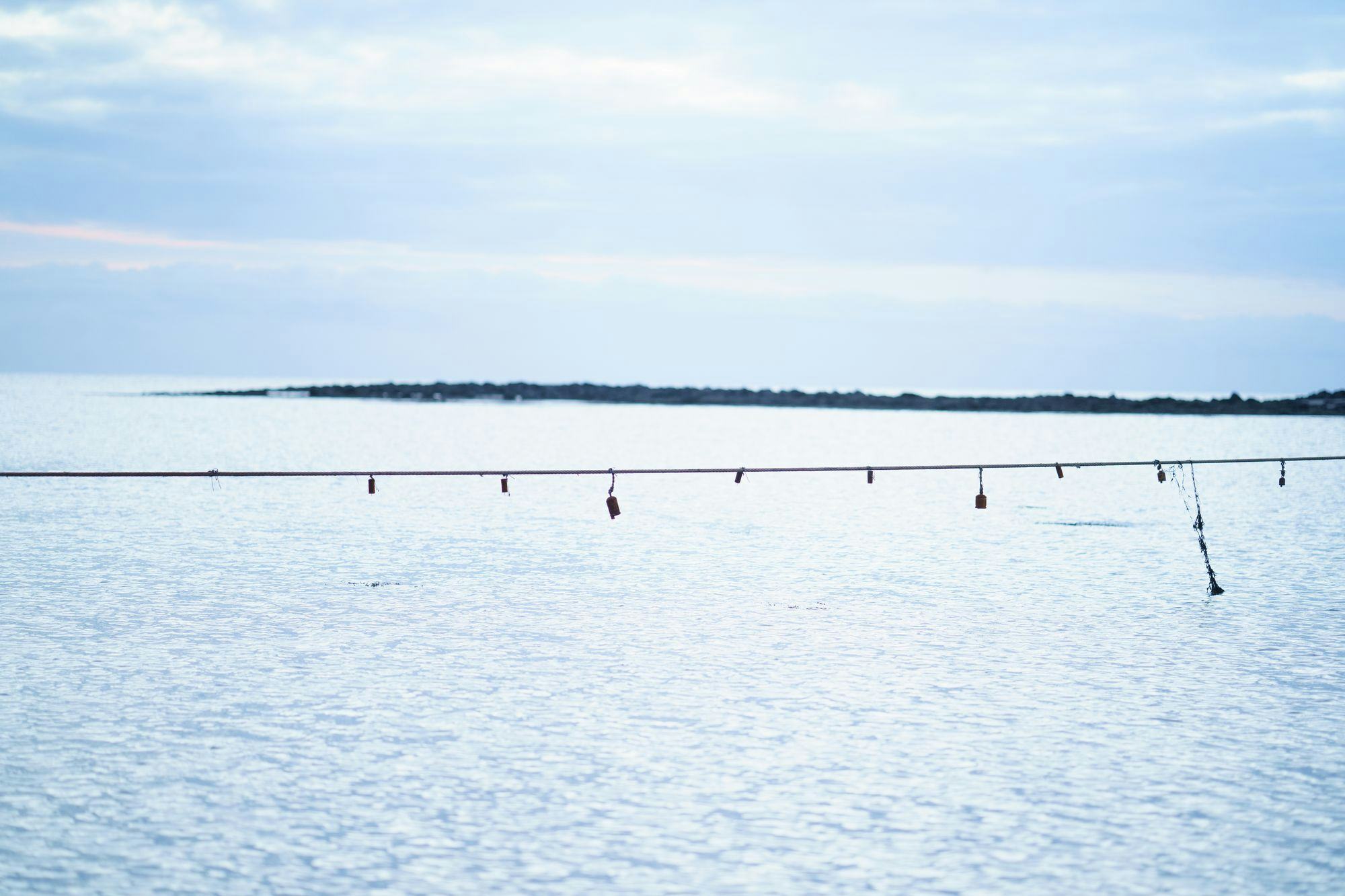Honorary Award 2023: Ragnheiður Jónsdóttir
The Honorary Award is granted to an artist whose long and successful career has made a significant impression on the history of Icelandic art. This year’s recipient of the award is Ragnheiður Jónsdóttir (b.1933).

The Honorary Award is granted to an artist whose long and successful career has made a significant impression on the history of Icelandic art. This year’s recipient of the award is RagnheiðurJónsdóttir (b.1933), who has made a great mark on Icelandic art history with her effective use of the drawing medium, first in printmaking and then later with her particularly magnificent and powerful drawings. She was in her thirties when she first started to make a name for herself in the art scene. Her first solo exhibition was held in 1968 and her career has continued consistently since.
Printmaking as an artform is what Jónsdóttir concentrated her efforts on at the start of her career. Towards the end of the 1960s, artists became interested in working in media that had historically received little attention. Printmaking was therefore a form of expression that found favour with many artists at that time and the seventies became the golden age of printmaking as an artform in Iceland. Women artists like Jónsdóttir were particularly successful in this field. One explanation for that might be that traditional media, such as painting and sculpture, had a long history of mostly male domination. Thus, printmaking offered an opportunity for a different kind of expression. From the outset, Jónsdóttir adapted varied and sophisticated methods in creating her printworks and soon became very adept at developing the technique in her own personal way. This gave her a leading role, both in Iceland and abroad, in promoting and understanding printmaking as a medium.
In her art prints, Jónsdóttir used a wide variety of drawing and surface treatments to create unique and often surprising imagery. Her works have a strong sense of chiaroscuro, creating a distinct theatrical space, provoking a sense of mystique. Her works at this time were serial, many works based on a strong, central theme, where she created a strong and unusual atmosphere. One of the characteristics of these works was a strong personification of everyday items, giving them an inner strength, as they were able to act and influence their surroundings. Although her works from this time were not ostensibly political in nature, it is clear that Jónsdóttir was a leading figure in addressing many of the period’s most pressing issues. Her works from the middle of the 1970s, focusing on the rights and position of women in society, later were to became iconic images for the second wave of feminism in Iceland. At the same time, Jónsdóttir did works that addressed humanity’s terrible effects on the ecosystem and the environment.
In the latter half of her career, from the start of the 1980s until today, Jónsdóttir has broken new ground in her treatment of the drawing. Here, her medium of choice is charcoal on paper, more often than not on a large scale, so that the image encompasses the viewer’s visual field. In these images, Jónsdóttir has developed her drawing in a novel way. The focus is on a simpler composition than in her graphic works. Here, she uses the media to create fluid formal repetitions that create strong, simple imagery; the main thing is the overall view, single parts dissolve and merge with one another. In these works, the artist becomes a tool, working on the basis of natural development and processes. The artwork is created on the premises of the process of drawing itself. Sketching, shaping, the play of lines, and erasure become the raison-d’étre of the work. Within these images natural forms are in the forefront, in the emphasis of illustrative planes and curvatures that seem evocative of organic elements. Sometimes, the drawing suggests a close-up of fur or plumage, without indications of representing anything specific. In others, the charcoal takes on an earthy hue, you can imagine Jónsdóttir venturing out of the studio to examine the lava and vegetation surrounding it. These are sublime drawings where the drawing gestures is an indication of landscape overwhelming the viewer visually, so he loses his bearings becomes drawn into the image plane itself.
Jónsdóttir receives this recognition because of her varied contribution to the Icelandic art scene. She has worked to enhance the stature of drawing and printmaking within Iceland and abroad. She has created multiple and diverse world images within her oeuvre, constructing a vision of emancipated femininity coupled with a sense of magical realism in her extensive drawings and print series. In later years, she has taken drawing head-on in magnificent images where the essence of the natural is expressed, with a strong sense of proximity in an extensive, textured practice of drawing. It is on this diverse basis that the Visual Arts Council has decided to honour Ragnheiður Jónsdóttir for her life’s work for the benefit of Icelandic art and culture.





-icelandic-pavilion-2000x2667.jpg&w=2048&q=80)

